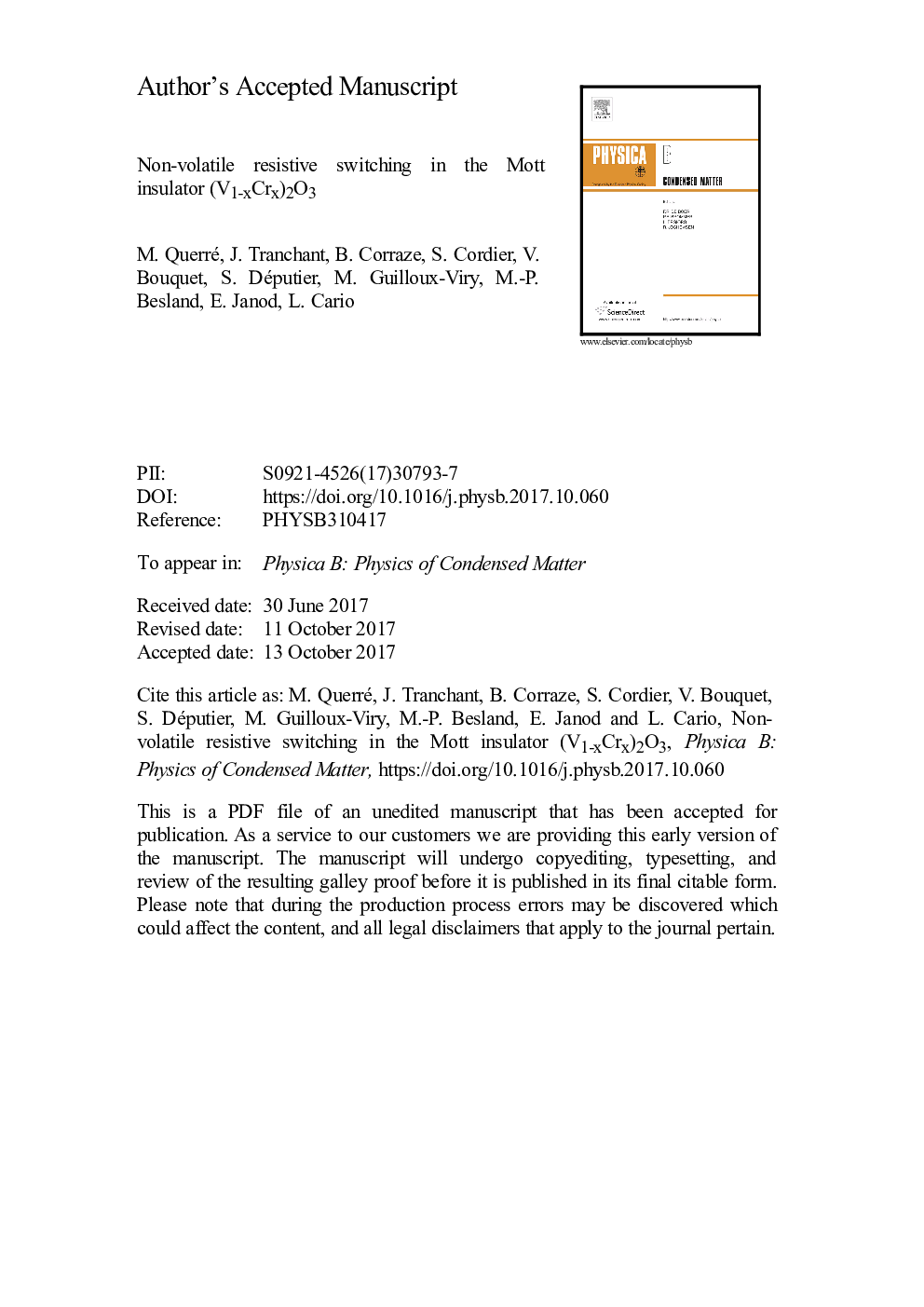| Article ID | Journal | Published Year | Pages | File Type |
|---|---|---|---|---|
| 8161257 | Physica B: Condensed Matter | 2018 | 7 Pages |
Abstract
The discovery of non-volatile resistive switching in Mott insulators related to an electric-field-induced insulator to metal transition (IMT) has paved the way for their use in a new type of non-volatile memories, the Mott memories. While most of the previous studies were dedicated to uncover the resistive switching mechanism and explore the memory potential of chalcogenide Mott insulators, we present here a comprehensive study of resistive switching in the canonical oxide Mott insulator (V1âxCrx)2O3. Our work demonstrates that this compound undergoes a non-volatile resistive switching under electric field. This resistive switching is induced by a Mott transition at the local scale which creates metallic domains closely related to existing phases of the temperature-pressure phase diagram of (V1âxCrx)2O3. Our work demonstrates also reversible resistive switching in (V1âxCrx)2O3 crystals and thin film devices. Preliminary performances obtained on 880Â nm thick layers with 500Â nm electrodes show the strong potential of Mott memories based on the Mott insulator (V1âxCrx)2O3.
Related Topics
Physical Sciences and Engineering
Physics and Astronomy
Condensed Matter Physics
Authors
M. Querré, J. Tranchant, B. Corraze, S. Cordier, V. Bouquet, S. Députier, M. Guilloux-Viry, M.-P. Besland, E. Janod, L. Cario,
